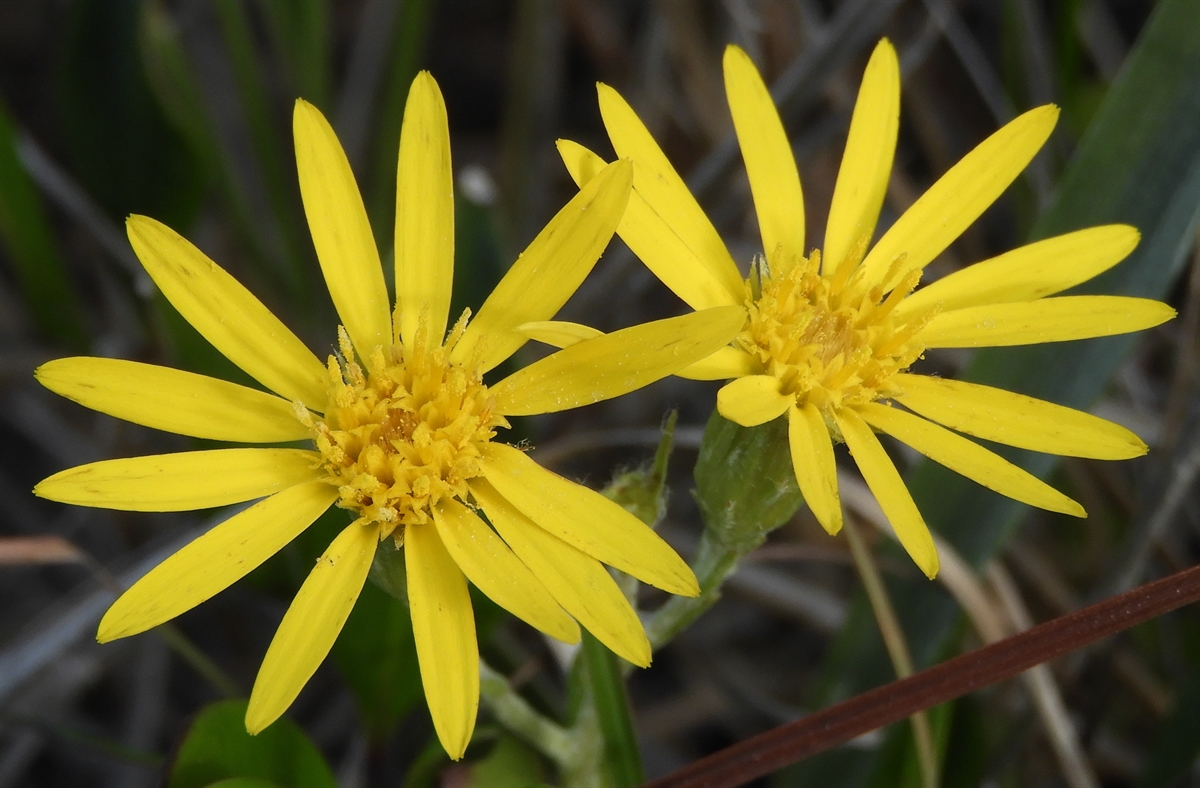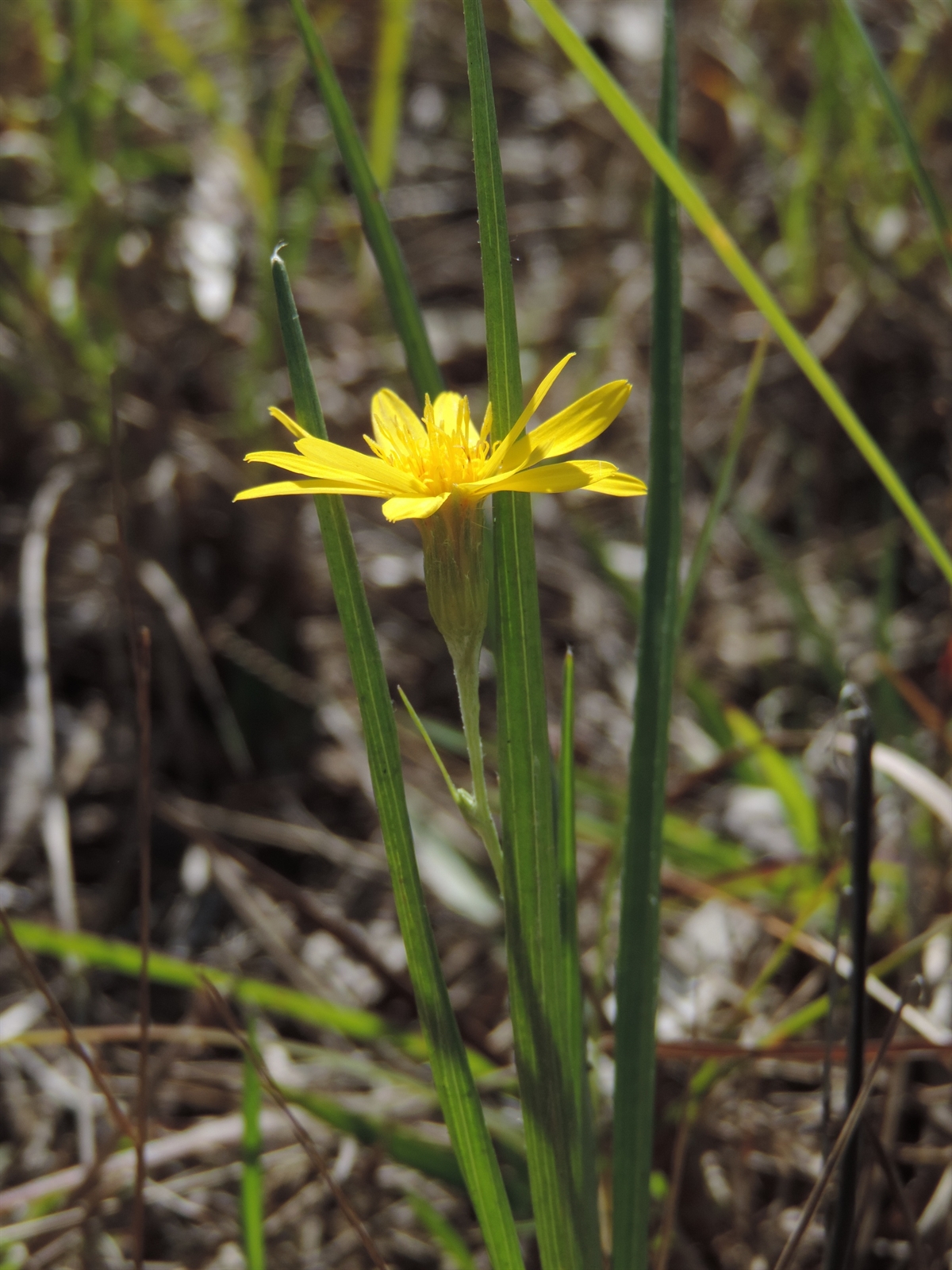Habit: Pityopsis graminifolia grows as a soloniferous perennial herb to 1 m (usually lower) in height. The leaves are arranged alternately, to 30 cm in length and covered with silvery sericeous hairs, grass-like in shape with an entire margin, tapering leaf base and acuminate leaf apex. Leaves longest at the base becoming bract like at the stem tips.
Pityopsis graminifolia is monoecious. The incomplete, imperfect, actinomorphic and zygomorphic flowers are arranged in heads together forming a panicle like arrangement. The heads are subtended by a series of involucral bracts. The calyx is modified as a ring of small projections (pappus). There are both perfect and imperfect (carpellate) flowers in the heads. The perfect (disk) flowers are in the center and the imperfect (ray) flowers are arranged around the edge of the heads. Each flower is subtended by a bract.
The zygomorphic, incomplete, imperfect, ray flowers have 3 bright yellow fused petals and no stamens. The actinomorphic, complete, perfect, disk flowers have a corolla with 5 fused, yellow petals. There are 5 stamens fused at their base. In both types of flowers the ovary is inferior with a single locule but only the perfect flowers have functional ovules. The fruit is an achene at maturity that retains the modified calyx (pappus) that is fused forming a shallow cup.
Habitat: Pityopsis graminifolia grows in Pine Woodlands.
Distribution: Pityopsis graminifolia occurs on Abaco and Grand Bahama and the southern United States.
Medicinal/Cultural/Economic usage: Pityopsis graminifolia is not known to be used medicinally in the Lucayan Archipelago.


